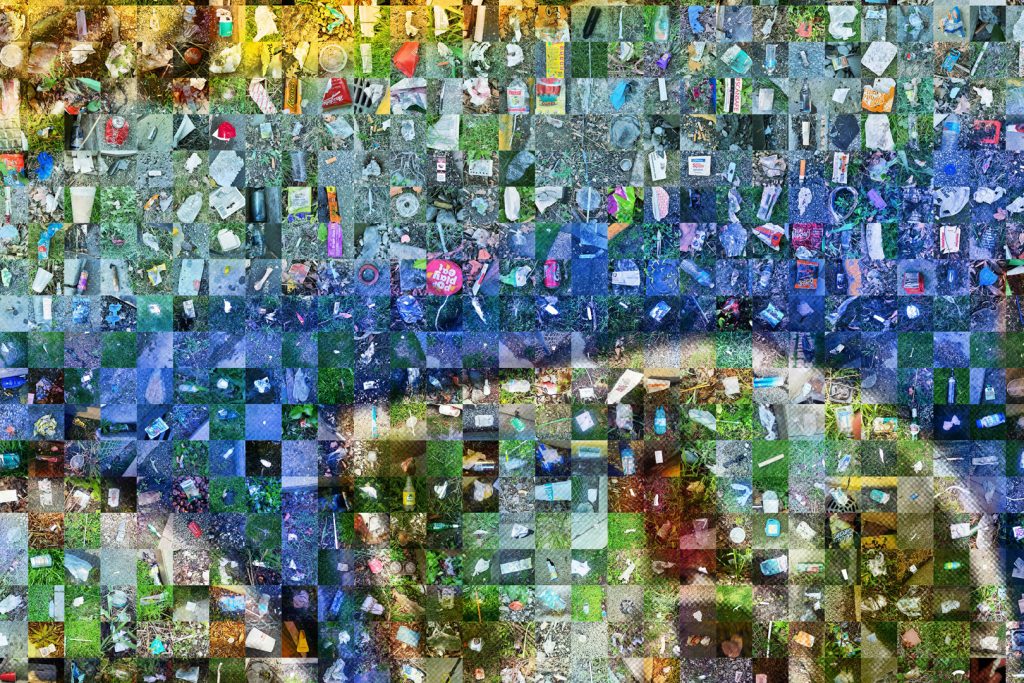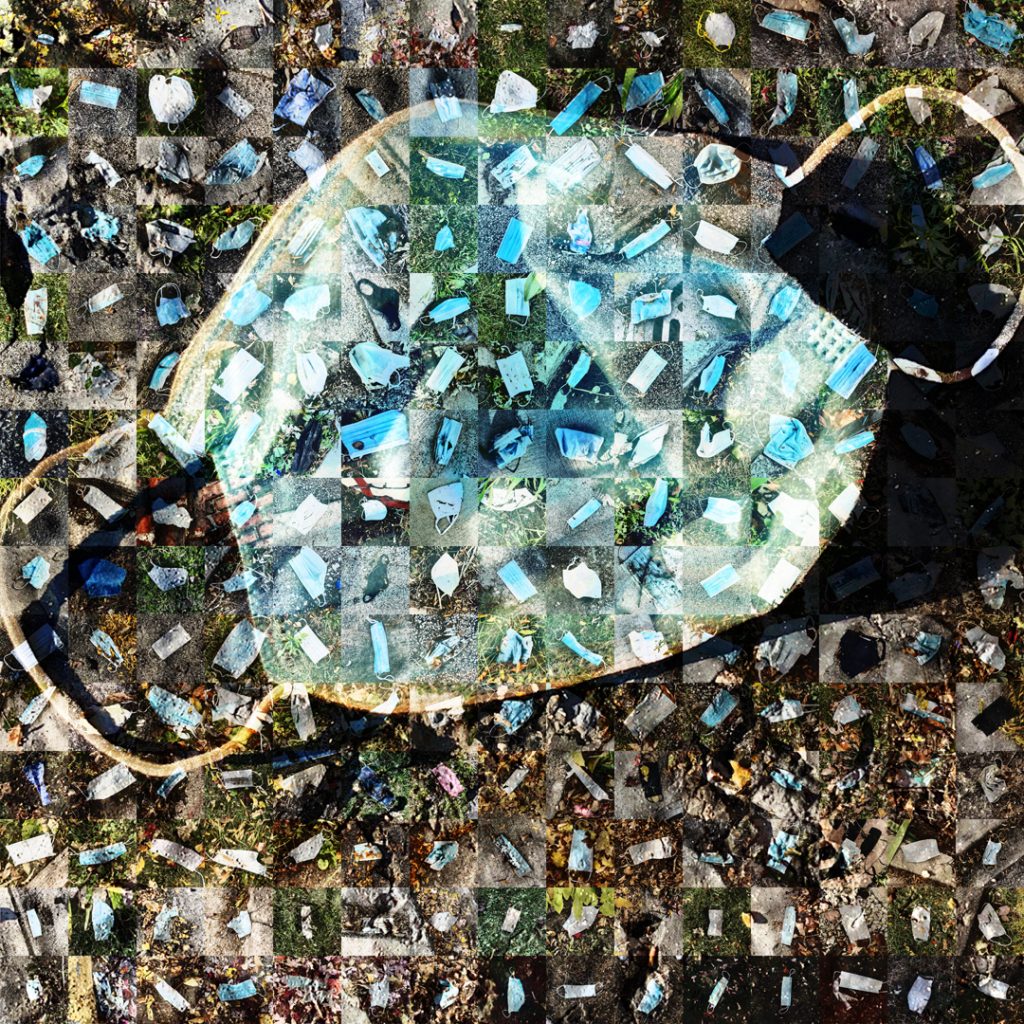Julieta Aguilera
[ United States / Chile ]
The Science, Art and Trash project is an investigation on selective attention and how the process of data gathered in real space and classifying what has been collected compares to perception. The project utilizes the Litterati app to compile images of street garbage which were then displayed in a mosaic fashion in 2019 in the town where the data were collected by neighbors. The image was then presented as a summer “mini traveling exhibit” in institutions and businesses across town, two weeks or so at each location.
With the pandemic, the exhibit moved online to social media and the collection and classification by material, object and brand continued. Whereas reactions to the mosaic image suggest that large numbers have only a vague significance among adults, the sudden appearance of face masks among the various proportions of objects classified reveals that novelty enjoys excessive saliency, even as the classified data shows that the face masks are not even in the top ten items found. This comparison bypasses the problem of a lack of understanding of numbers and transfers the issue to the context in which the objects were collected, giving a sense of what is invisible in plain sight. A consistent percentage of plastic materials in the 60-70% range (wrappers, bottles, cups, lids, straws, bags, wipes, containers, etc…) confronts the community with perceptual biases that distance consumer behavior from taking responsibility on the plastic pollution crisis.
There is a deep disconnect between perceived individual direct experience and the data that shows the human caused climate crisis. Decades of massive denial prioritizes direct experience and attention, and ignores the cumulative consequences of utilizing fossil fuels to the point they become invisible –even when those consequences do eventually reach direct experience. The perceptual normalization of single use plastics is one example of this phenomena, where attention has been numbed to the pollution that is being distributed to consumers on behalf of the fossil fuels industry, an industry which is quickly switching from energy to plastic production to maintain its profits. In the global context, walking the walk of data collection and classification becomes both a scientific and an aesthetic exercise to connect to our environment beyond direct experience in order to check on aspects of reality that are currently obscured by perceptual biases and reinforced by selective attention.
Primary Project URL: From Galaxies to Garbage
Additional Link: Facebook: Science, Art and Trash
- Medium: Mosaic image
- Year Produced: 2019-ongoing

2019: Map showing locations of litter collected that year 
2019: Image mosaic overlay on historic postcard of the 6,000 pieces of litter collected on the first half of the year 
2019: Magnification of a section of the image mosaic which the public would appreciate when getting closer. 
2019: 4×4 ft print of the image mosaic being displayed at the participating locations of the mini traveling exhibit. 
2020: Year collection of 3025 cigarette butts exhibited online because of the pandemic. 
2020: Year collection of 625 plastic cups 
2020: Year collection of 529 plastic shopping bags 
2020: Year collection of 289 plastic water bottles 
2020: Year collection of 225 facemasks that are not even in the top ten objects found for the entire year 
2021 (spring): Items collected associated to drinks: 169 plastic straws, 144 plastic lids, 25 plastic lids and plastic straws, 16 plastic cups with plastic lids and plastic straws 
2021 (spring): Items collected associated to foods: 25 plastic takeout containers, 121 plastic sauce sachets, 36 pieces of plastic cutlery, 9 plastic flossers
Julieta Aguilera
IMERSA (Immersive Media Entertainment, Research & Arts)
Dr. Julieta Aguilera has worked on immersive spaces including VR, planetariums and other platforms for over two decades and her ongoing research is focused on how invisible aspects of reality can be brought to the human sensory motor attention through scientific and aesthetic visualization. She has taught the full design curriculum as well as courses on immersion at universities in New Hampshire, Chicago and Hawai’i. Dr. Aguilera holds a BA from the School of Architecture of the Catholic University of Valparaíso, in Chile, and MFA in Graphic Design from the University of Notre Dame, and MFA in Electronic Visualization from the University of Illinois at Chicago in the United States, and Ph.D. from the University of Plymouth in the United Kingdom. She worked for a decade in Planetariums, as the Associate Director of the Space Visualization Laboratory at the Adler Planetarium in Chicago, and as a Visiting Visualization faculty at the University of Hawai’i in Hilo, hosted by the ‘Imiloa Planetarium. She continues to work on topics of environmental embodiment, and as a reviewer from various conferences and publications. She currently sits on the Board of Directors of IMERSA.
Artist’s Website: julietina.com

